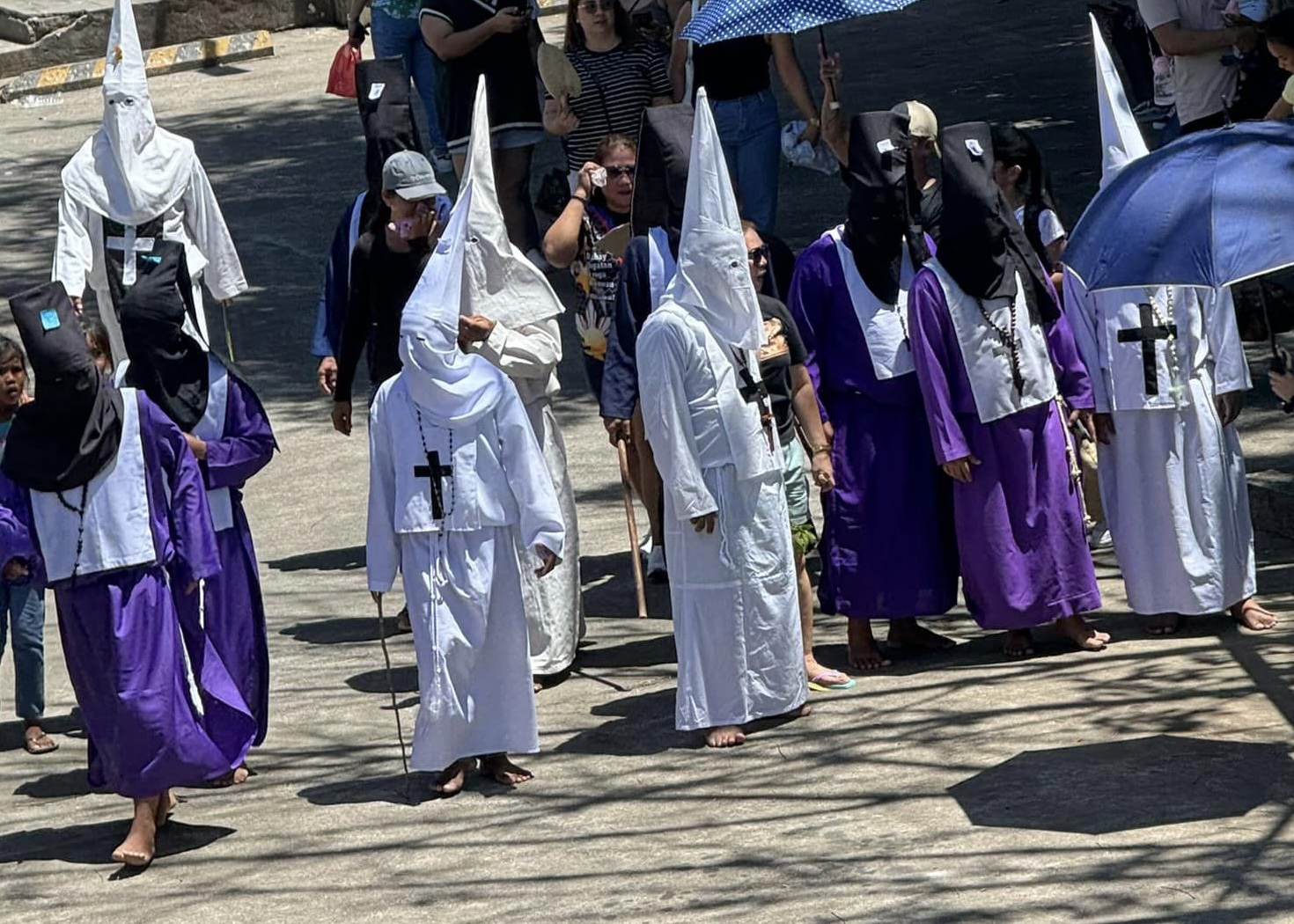A tradition of penitence during the Holy Week in Palo, Leyte made the rounds in social media primarily because of the “capirote,” a Catholic pointed hat of conical form used in Spain and Hispanic countries by members of a confraternity of penitents.
According to Monsignor Gilbert Urbina of the Archdiocese of Palo, the tradition is done only in the Holy Week, especially on Good Friday.
The penitents are referred to as the "Tais-Dupol," an all-male religious group. “Tais” stands for pointed, while “dupol” means blunt. These describe the hats the group wears.
Monsignor Urbina, in his post, pointed out that the “penitentes” (penitents) garbed in capirotes are “descendants of the former flagellants which abound during Holy Week in the 1600s (as attested to by the Jesuit chronicler-historian Pedro Chirino).”
Msgr. Urbina explained that it was in the late 1800s when the Franciscan Fray Pantaleon de la Fuente organized these flagellants and gave them the medieval penitential habit in Spain.
“Their long robes and covered faces evoke anonymity and humility in line with the injunction of the Lord for those doing fasting or penance (confer Matthew 6:16-18),” Urbina added.
Further, Urbina said that the penance or mortification is made more intense in Palo due to the hot weather and the fact that the “tais-dupol” go barefoot.
Msgr. Urbina laments, though, as to how netizens who are not from Palo associate the garb with the KluKluxKlan (KKK) which was active in southern USA in the late 1800s and early 1900s.
“Associating the Tais-Dupol with the KKK betrays an ignorance of the foundations and origins of the KKK as an anti-Catholic and anti-black association. In fact,the KKK’s use of the medieval penitential garb of Spain was a downright mockery of the Catholic faith and practices. So, to associate the KKK with the Tais-Dupol reveals ignorance not just of history but also of cultural anthropology,” Urbina underscored in his post.





